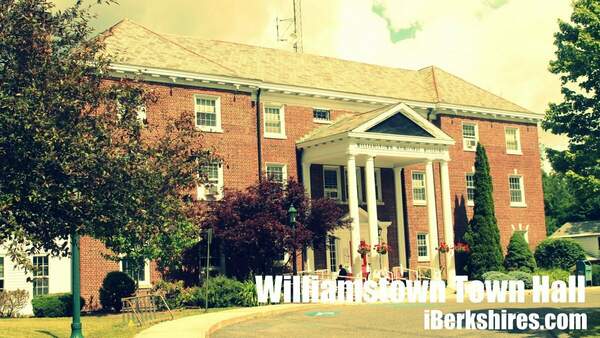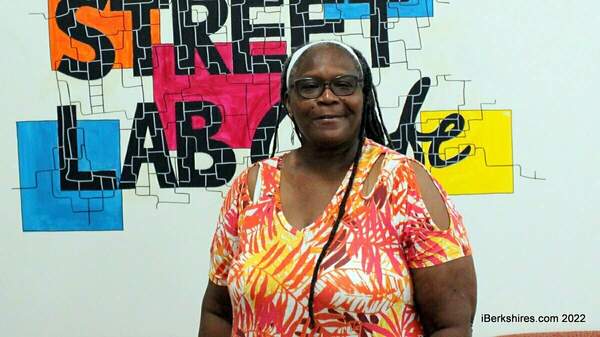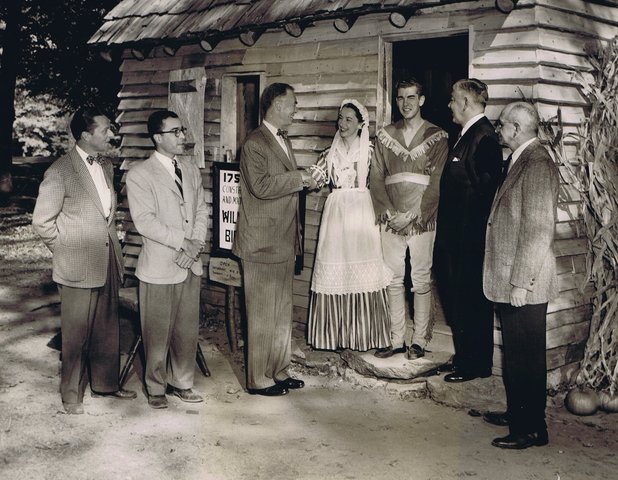
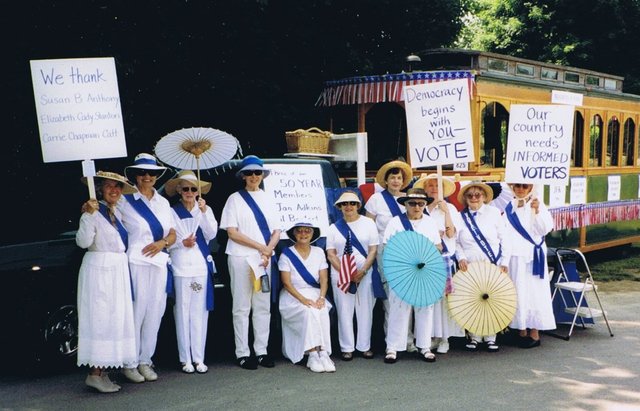
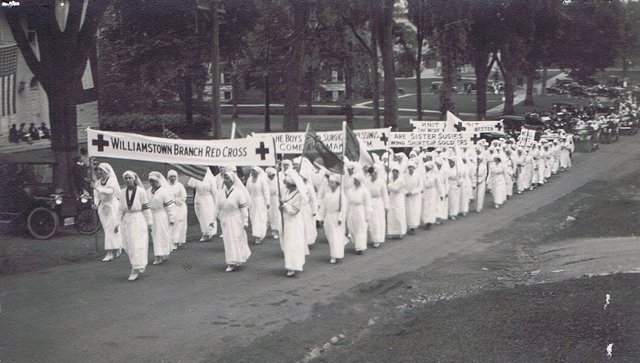
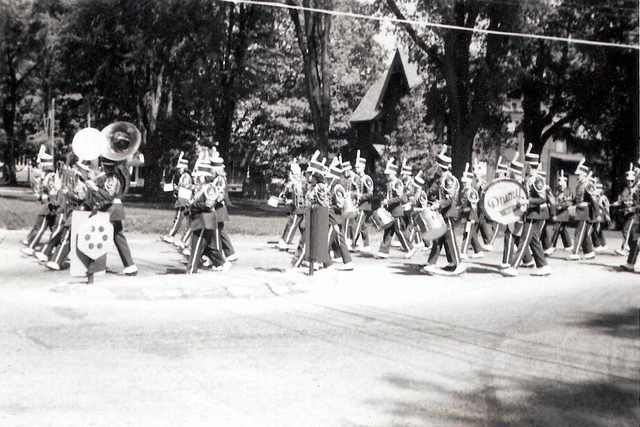
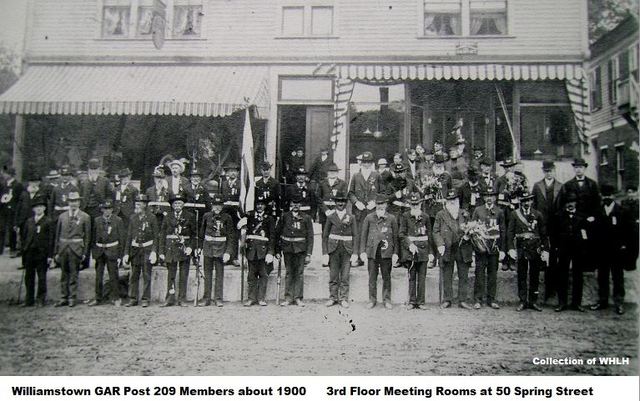
Williamstown Recalls 'Big Days' of Celebrations
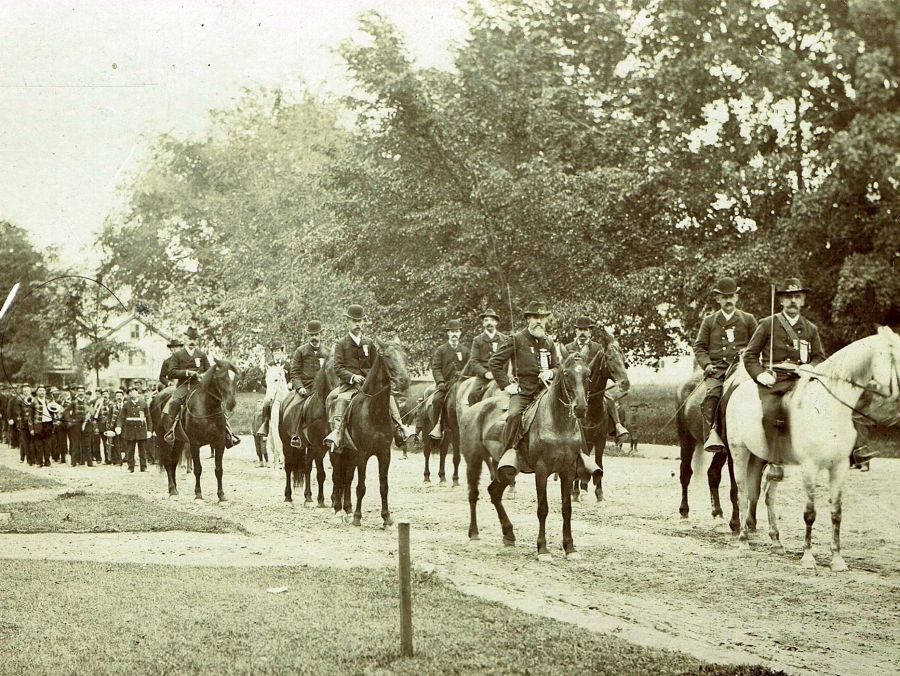 The Williamstown Historical Museum is showcasing the town's 'Big Days' of parades and commencements. Above, an early Memorial Day parade. The Williamstown Historical Museum is showcasing the town's 'Big Days' of parades and commencements. Above, an early Memorial Day parade. |
WILLIAMSTOWN, Mass. — The Williamstown Historical Museum does more than collect and preserve materials related to the town's history.
It tries to enlighten and entertain visitors by bringing the past back to life through exhibitions.
On Saturday, May 17, the Williamstown Historical Museum, founded as the House of Local History in 1941, will open a new exhibit titled "Big Days in a Small Town."
Curated by Dustin Griffin, the exhibit traces the history of how Williamstown celebrated holidays and other occasions that span from the 19th century to the present: the Fireman's Ball, Grange Fair, Bicentennial (1953), Williams College Commencement, Memorial Day, Independence Day and the Holiday Walk.
"I first got interested in the topic when I read about Nathaniel Hawthorne's description of the country-fair atmosphere at the Williams commencement in 1838," said Griffin, reviewing the text for the exhibit. "Later when doing research on the Civil War, (in 2011 Griffin curated the WHM exhibition "Williamstown in the Civil War") I got interested in the beginning of Memorial Day, invented in 1868 as an occasion to decorate the graves of Union soldiers. The first observance in Williamstown was in 1870.
"I have been going to Williams College commencements on and off for 50 years. Since moving to Williamstown in 2003, I have always enjoyed the July 4 and Memorial Day parades."
The "Big Days in a Small Town" exhibit will open with a reception at 10 a.m. followed by a lecture by Griffin, including a slideshow, at 11 a.m.
For the lecture, Griffin said he will not talk about the entire exhibit: "I picked three days that are coming up on the calendar: Memorial Day, Williams College Commencement and a month later July 4."
Griffin said Williams College archivists were very generous in supplying information about Williams commencements.
"For the first 75 years or so, the audience was not just college people but townspeople as well. Families from the surrounding area got dressed up and took a holiday, and came into town. Commencement was like a small country fair in the early 19th century," said Griffin, who graduated from Williams in 1965 and is professor of English emeritus at New York University.
Williams' first commencement took place in 1795 in the meetinghouse, First Congregational Church, then situated on the "The Green" now known as Field Park.
Commencement ceremonies were held inside until the late 20th century with Thompson Memorial Chapel being the site of the event from 1912 when it opened.
"As the number of students and alumni increased, there was not room for townspeople in the buildings where the commencement ceremonies were held," Griffin said.
After the ceremonies were moved outside to the lawns of the college campus, inclement weather was more of a threat to the festivities than ever before.
"In the last 25 to 30 years, commencement has become more town inclusive - some townspeople bring lawn chairs and listen and watch the festivities," said the Williams alumnus.
In reading microfilm of old issues of the former North Adams Transcript, Griffin found information about the history of holidays and good accounts of Memorial Day and July 4 parades.
"July 4 from the late 1940s to mid-1980s was a very big day. Old-timers may remember when it was a big field day on the elementary school grounds with games, races, competitions, a merry-go-round and other rides, and food booths. At its peek it drew nearly 10,000 people"
As for the other "Big Day" that is observed nationally, Griffin described how the route of the Williamstown Memorial Day parade has changed over the years.
"Most townspeople now know the route as from Spring Street to Field Park," he said. "But there was a time when it went to Eastlawn Cemetery, Westlawn cemetery, Southlawn cemetery or the college campus, where a ceremony was held at the Soldier's Monument in front of Griffin Hall."
Dedicated on July 28, 1868, the Soldier's Monument, a bronze statue of a Union solider, commemorates the Williams men who made the supreme sacrifice in the Civil War.
Among the artifacts in the "Big Days in a Small Town" exhibition are posters, newspaper clippings, photographs, a 1799 college commencement program, an invitation to the very first fireman's ball in 1899 and a trophy from what was the last Grange horse show.
The exhibit will be on view from May 17 until November at the Williamstown Historical Museum, located in the Milne Public Library building at 1095 Main St.The museum is open weekdays from 10 a.m. to noon and from 1 to 3 p.m. Admission is free. For more information: 413-458-2160.
Tags: 4th of July, exhibit, local history, Memorial Day, parade,

